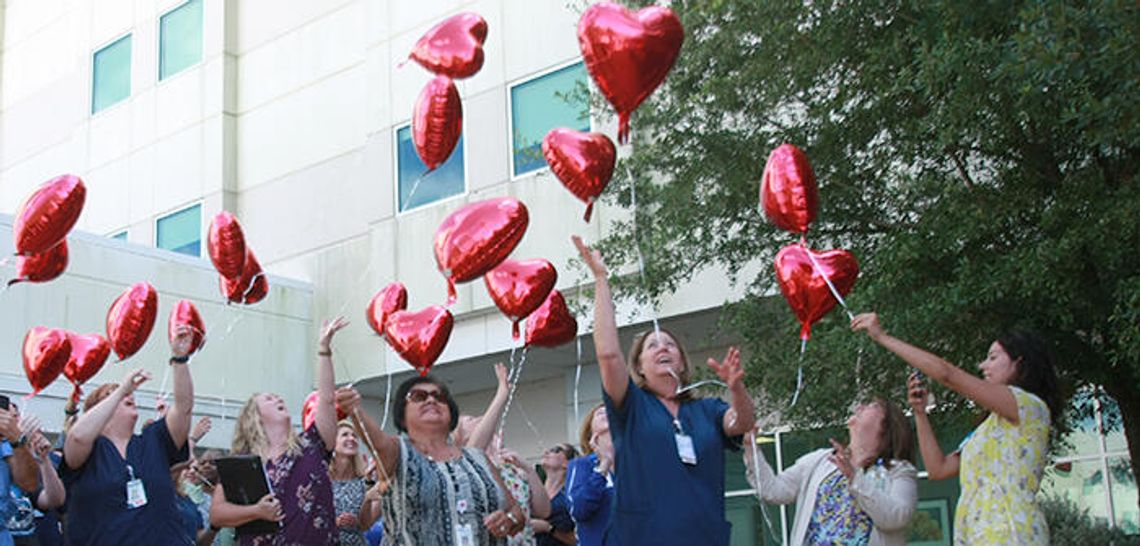[dropcap]F[/dropcap]or the better part of three months, Wimberley resident Thomas Pletcher could feel something wasn’t quite right with his body.
Every time he did something in the yard, he would get a peculiar feeling that forced him to rest. Eventually it go so bad, he asked his wife to take him to Seton Medical Center Hays.
“I felt this was something I had to take a look at,” Pletcher said.
A quadruple coronary artery bypass later, Pletcher, a 69-year-old retired Air Force helicopter pilot, has a new lease on life. Pletcher’s story is one of 100 who have received cardiac surgical care at Seton Hays since July 2016.
Their success is due in part to Jeffrey McNiel, MD, FACS, who began operating at Seton Hays last summer.
McNiel said he was brought on after the hospital staff was at a point of having to decide if they were going to continue to do cardiac surgery.
After retiring from the Air Force 18 months ago, McNiel said he was recruited to potentially join the Cardiothoracic and Vascular Surgeons (CTVS) team.
From there, he made his way to Seton Hays, where he saw a chance to “be able to build a program the way I wanted to run it” and make it into the “best it could be.” He added the relationship between Seton and the CTVS team developed the program.
“That’s how I approached it, to give us an opportunity to make it my own and grow with it,” McNiel said.
Reaching the 100-surgery milestone is a benchmark many hospital programs strive for, McNiel said. Having as many surgeries in that range helps a program by maintaining proficiency in all departments, from surgery to the ICU and even rehab.
“The surgery may be about four hours, but (patients) are here for four or five days,” McNiel said. “They’re going through rehab for six weeks. It’s a significant effort from all those people to get good results from the surgery.”
He added that going through 100 surgeries ensures everyone “knows the steps” to help with the recovery process.
“A trip to Austin for rehab isn’t feasible for a lot of people ... People might have to make the decision if they’re going to stick with the program, or if they’re going to resign from it and not complete the whole treatment plan that we can offer.” Jeffrey McNiel, MD, FACS
“When everyone knows how things are supposed to go and it’s a process everyone’s familiar with, the outcomes get better,” McNiel said. “When something is a problem, it’s recognized earlier.”
Another added benefit is that patients who may suffer from chest pain can receive the full slate of treatment at Seton Hays. Most community hospitals can provide the initial evaluation and screening, but McNiel said they don’t have the ability to do the “full spectrum” of cardiac care.
“It has a huge impact on what the hospital can do if you remove cardiac surgery from the equation,” McNiel said.
Sue Kalinec, a heart valve surgery patient from Cistern in Bastrop County, said having the surgical center nearby helped her discover her heart problems, and allowed doctors to fix it.
“It wasn’t something I could wait a month or 6 months, it was now,” Kalinec said. “The care that I received here, everyone was so supportive, it was really a family.”
Having the ability to conduct surgeries at Seton Hays also helps families of patients as well.
Family support is easier for patients, who may not have to travel as far to visit. McNiel said family support is a “big part of the recovery.”
It also helps the patient as they don’t have to go into Austin for rehabilitation.
“A trip to Austin for rehab isn’t feasible for a lot of people,” McNiel said. “People might have to make the decision if they’re going to stick with the program, or if they’re going to resign from it and not complete the whole treatment plan that we can offer.”
Bringing a service to the area, which is rapidly growing, was also a big factor in bringing the cardio surgical services to Seton Hays. Emergency services can also have a more localized place to bring patients who may have a possible heart issue.
“If you look at the demographics, it’s going to increase as the population grows,” McNiel said. “We want to do it right from the beginning and not play catch-up with the patient population.”










